 |
 |
 |
| |
HIV Does Not Affect Chance of HCV Genotype 2 or 3 Responding to PegIFN/RBV
|
| |
| |
53rd ICAAC, September 10-13, 2013, Denver
Mark Mascolini
Two thirds of people with HCV genotype 2 or 3 in an Italian single-center study responded to pegylated interferon plus ribavirin (PegIFN/RBV), and HIV infection did not independently affect chances of a sustained virologic response (SVR) in multivariate analysis [1].But HIV/HCV-coinfected people were more likely than people infected only with HCV to have advanced (F4) fibrosis, and advanced fibrosis independently lowered SVR chances.
Infection with HCV genotype 2 or 3 responds to PegIFN/RBV more often than genotype 1 or 2 infection. Because little is known about how HIV coinfection may affect chances of SVR in people with type 2 or 3 infection, researchers at an infectious disease center in Brescia, Italy conducted this retrospective analysis of adults infected with those genotypes and starting a first course of PegIFN/RBV between 2005 and 2010.
Study participants took PegIFN/RBV for 48 weeks, but HIV-negative people could stop at week 24 if they had a rapid virologic response or began treatment with fibrosis stage F0 to F2 or an HCV load below 500,000 IU/mL. All HIV-positive patients could use growth factor, but only cirrhotic HIV-negative people could use growth factor. Ribavirin dose could be reduced in any patient if hemoglobin fell despite erythropoietin, if the white cell count remained below 750 in people without HIV, or if the white count fell in an HIV-positive person taking growth factor. Everyone had a Child-Pugh score at or below A5.
Of the 740 study participants, 113 (15%) had HIV and 627 did not. Of the 113 people with HIV, 5% had genotype 2 and 95% had genotype 3. Proportions with genotype 2 and 3 in the HIV-negative group were 45% and 55%. The HIV group included a lower proportion of women (15% versus 36%, P < 0.0001), had lower average body mass index (23.8 versus 25.1 kg/m(2), P = 0.004), and had lower platelet counts (163,200 versus 208,400, P < 0.0001). A lower proportion of HIV-positive than negative people had a pretreatment HCV load above 500,000 IU/mL (33% versus 51%, P = 0.0004). And a significantly higher proportion of people with HIV had F4 fibrosis (23% versus 5%, P < 0.0001).
A moderately but significantly lower proportion of people with than without HIV attained SVR (58% versus 67%, odds ratio [OR] 1.5, 95% confidence interval [CI] 1.0 to 2.2, P = 0.02). Among HIV-positive nonresponders, 15% never had a virologic response, 50% responded and relapsed, and 35% stopped for any other reason. Respective percentages in the HIV-negative group were similar: 16%, 45%, and 40%. Among all study participants, a significantly higher proportion of people with HCV genotype 2 than genotype 3 attained SVR (71.7% versus 61%, OR 1.6, 95% CI 1.1 to 2.2, P = 0.001).
A significantly higher proportion of people with than without HIV had neutropenia during treatment (42% versus 12%, OR 1.3, 95% CI 1.2 to 2.2, P = 0.04), and a significantly higher proportion used growth factor (41% versus 4%, OR 1.2, 95% CI 1.1 to 3.3, P = 0.0005). A much lower proportion of HIV-positive people interrupted PegIFN (9% versus 68%, OR 0.2, 95% CI 0.1 to 0.3, P < 0.0001). Anemia rates did not differ significantly between people with and without HIV (12% and 10%), but a significantly lower proportion of HIV-positive people used erythropoietin (2% versus 16%, OR 1.5, 95% CI 1.1 to 2.6, P = 0.04).
Logistic regression analysis determined that HIV coinfection did not affect chances of SVR (adjusted odds ratio [aOR] 1.0, 95% CI 0.5 to 1.7). Age over 45, gender, F0 to F2 fibrosis, and genotype 3 versus 2 also had no impact on chances of SVR. Ribavirin dose reduction doubled chances of SVR (aOR 2.2, 95% CI 1.3 to 3.8, P = 0.003). Advanced (F4) fibrosis, high pretreatment HCV load, and PegIFN interruption all lowered chances of SVR at the following adjusted odds ratios (and 95% CIs):
-- F4 fibrosis: aOR 0.4 (0.2 to 0.7), P = 0.004
-- Pretreatment HCV RNA above 500,000: aOR 0.6 (0.4 to 1.0), P = 0.03
-- PegIFN interruption: aOR 0.2 (0.1 to 0.3), P < 0.0001
The Brescia team cautioned that their sample size, especially people with HIV, is small. They suggested that failure of HIV infection to affect chances of SVR in multivariate analysis could reflect (1) longer treatment duration in everyone with HIV and (2) frequent use of growth factor to keep HIV-positive people on treatment at the highest dose. The researchers noted that the HIV group had a higher proportion with F4 fibrosis and that F4 fibrosis cut chances of SVR 60%.
The investigators argued that treating HIV/HCV-coinfected people, particularly those with genotype 2 or 3, "remains mandatory."
Reference
1. Nasta P, Giralda M, Chiari D et al. Higher rate of sustained virological response in patients with HCV genotype 2 or 3 infection regardless HIV infection. 53rd ICAAC. September 10-13, 2013. Denver. Abstract H-1528.
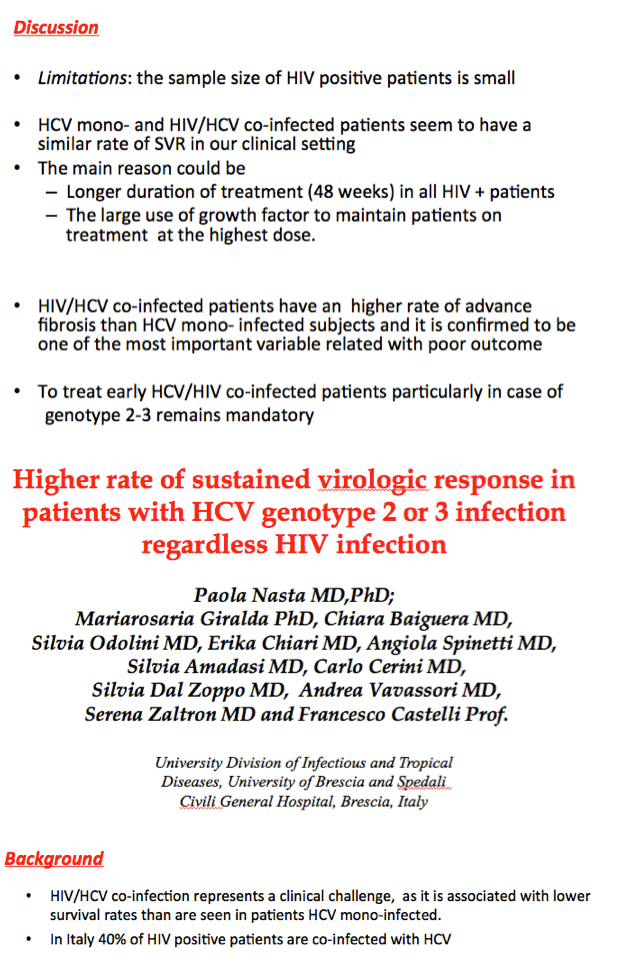
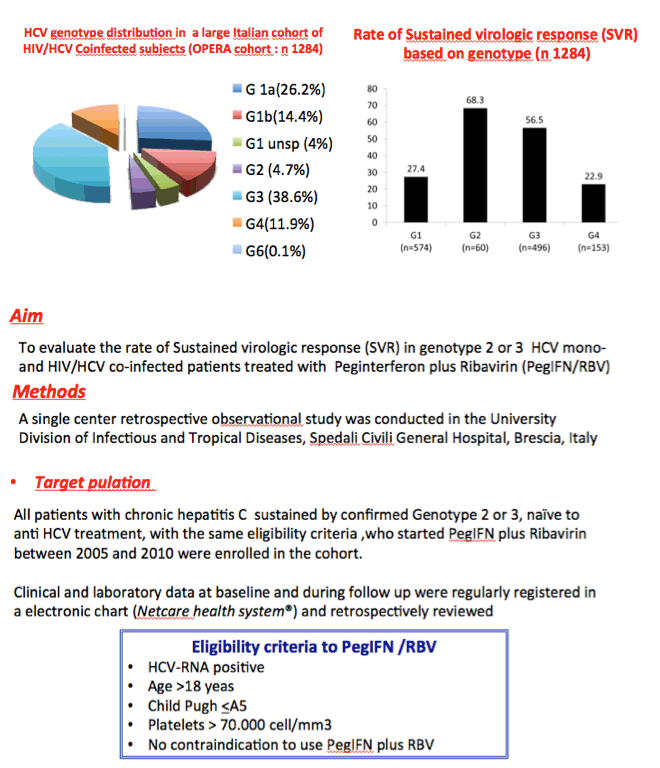

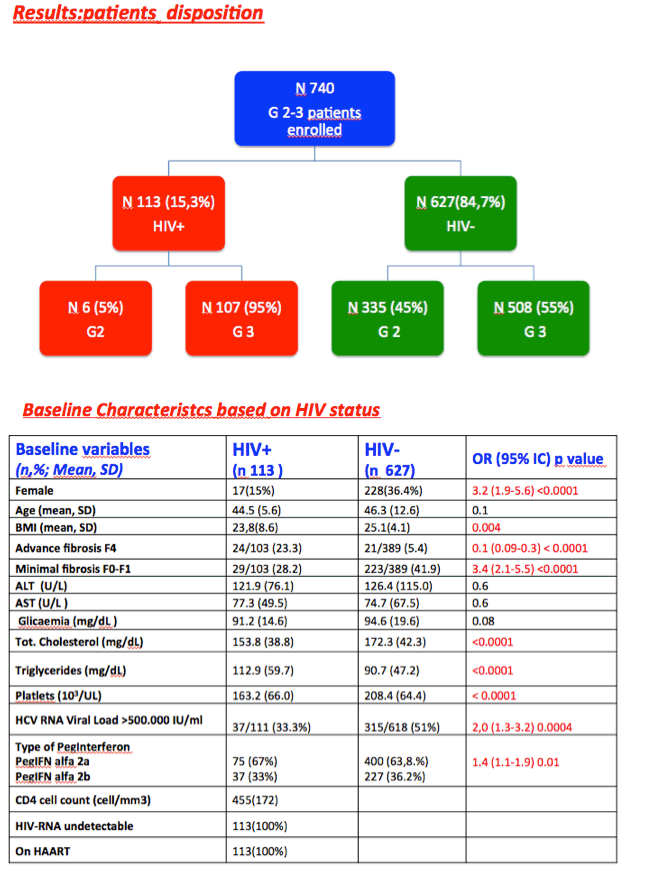
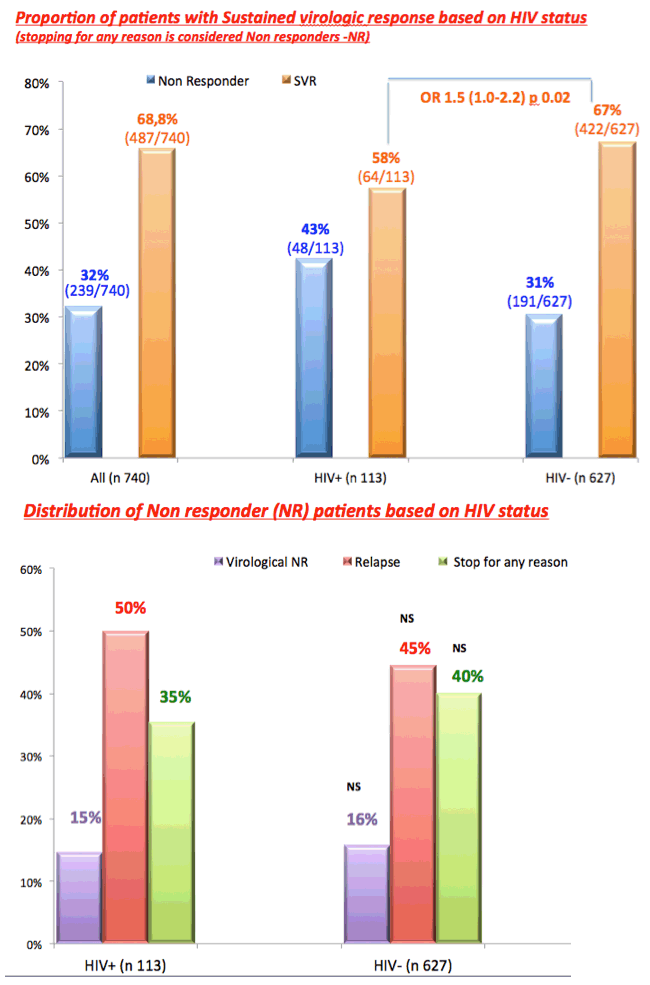
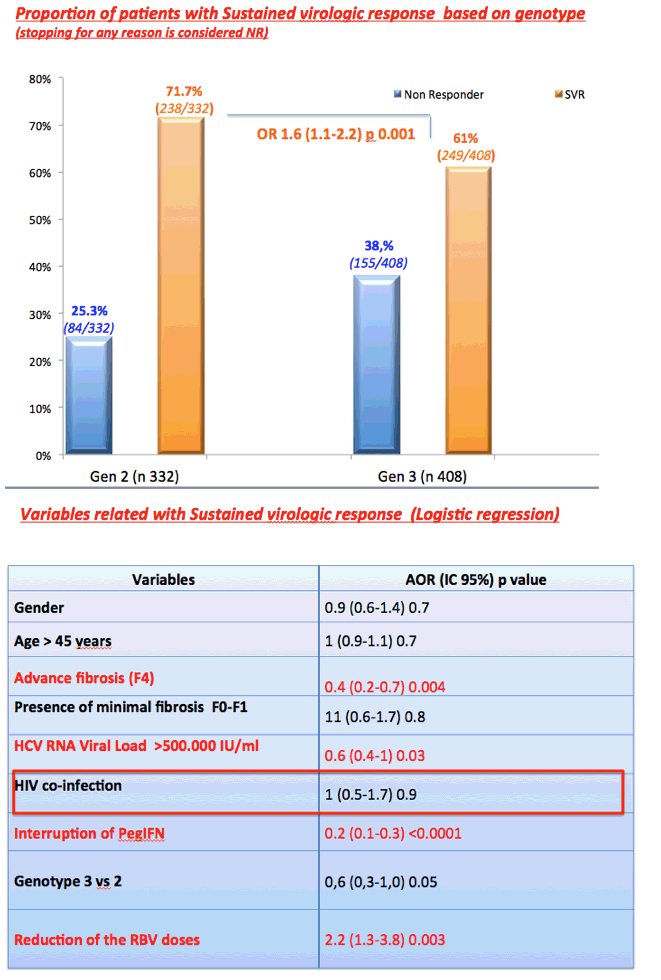
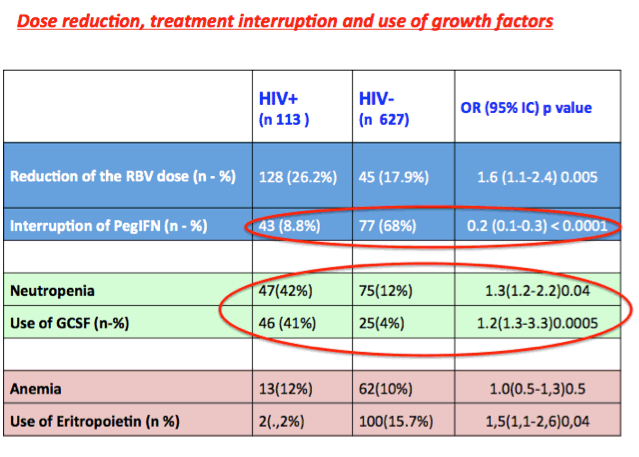
|
| |
|
 |
 |
|
|